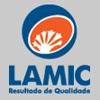Explore all the information on
Mycotoxins - Adsorbents, binders, tests
Welcome to the page about Mycotoxins - Adsorbents, binders, tests of Engormix; a source of knowledge on Mycotoxins - Adsorbents, binders, tests.
In 2017, 493 randomly collected feed samples of raw materials and feed mills in farms were analyzed. Samples were tested for aflatoxins (B1, B2, G1, and G2), zearalenone, fumonisins (B1, B2, and B3) and deoxynivalenol by the ELISA Mycotoxin analysis kit (Romer Labs®). Results Of 493 feed samples collected, 93.9% were contaminated with deoxynivalenol (table 1). All the maximum concentrations of mycotoxin were over the limit of quantification in this survey. ...
Comments : 2
Recommendations: 2
Dr. Raj Murugesan (Biomin) talked about surveys, detection and testing for mycotoxins in the United States, during the 22nd Annual Distillers Grains Symposium in Des Moines, Iowa...
Comments : 1
Recommendations: 3
The Professor of the Federal University of Santa Maria (Brazil) comments the changes uncover by research on mycotoxins in recent years, in an event by the Brazilian company Yes. ...
Comments : 1
Recommendations: 0
MINAZEL PLUS is created by innovative and unique technology following the European patent. The product use leads to a broad range of action such as adsorption of all mycotoxins, polar and less polar in a very high percentage. Once adsorbed to MINAZEL PLUS, mycotoxins are not desorbed through the intestinal tract.
Great speed of adsorption – the largest part of mycotoxins are adsorbed within a few minutes.
Does not adsorb nutrients from feed.
Effective in diverse conditions with the different...
Comments : 0
Recommendations: 1
Fusarium head blight (FHB), or scab of wheat (Triticum aestivum L.), is caused by Gibberella zeae Petch, anamorph Fusarium graminearum Schwabe (1, 2, 3, and 4). The role of anthers in Fusarium infection has been reported in the literature for many decades, since initial FHB in wheat was shown to occur via anthers (1, 17, 22, 24, 25, 26, and 27). FHB of wheat is a floral infecting disease. De Vries (9) has described the flowering process of wheat in detail. The hermaphrodite wheat...
Comments : 0
Recommendations: 0
Ben Letor, Director for Innovad, speaks about the ESCENT® technology during the VIV Asia 2017, in Thailand. ESCENT® was developed with the Ghent University in Belgium and this kit product consists of a range of wide spectrum mycotoxin control program and liver protection package combined with a professional risk assessment service....
Comments : 1
Recommendations: 10
Celer AFLA B1 is a specific immunoassay for the detection of the aflatoxin B1 among all the other aflatoxins. Its high sensitivty and specificity (low interferences for the other aflatoxins) make it a fast, cost-effective and reliable screening tool to detect small amounts of aflatoxin B1 in different matrices. The assay was validated on cereals, feed, nuts, dried fruits. The present work describes the validation results obtained for maize. ...
Comments : 1
Recommendations: 0
Nick Nikooforsat, President of Agrovet Alliance, Distributor of Special Nutrients in the Middle East, introduces MYCO AD, a Natural Dipolar Mycotoxin Adsorbent for poultry and pigs, during VIV MEA 2018, in the UAE....
Comments : 0
Recommendations: 1
Fernando Tamames III, President of Special Nutrients, a worldwide leading supplier of scientifically proven mycotoxins binders, share with Engormix the details of obtaining the FAMI-QS Certification, which will promote the global reach of this company, during IPPE 2018, in Atlanta, United States....
Comments : 0
Recommendations: 4
Marko Vasiljevic, Technical Manager for PATENT CO, points out the main aspects of the stud Mycotoxins Survey 2017, which PATENT CO developed during August to November 2017, screening corn samples received in Serbia and Bosnia, duing IPPE 2018, in the USA...
Comments : 0
Recommendations: 2
Radivoje Perovic, Executive Manager of PATENT CO, speaks about the new internal trial facilities developed recently in order to provide technical and export support for its customers...
Comments : 2
Recommendations: 3
A new mobile app developed by researchers from Purdue University and the University of Arkansas will make it easier for farmers to access information about corn ear rot and mycotoxins.
The app, available as a free download, helps users identify common ear rots and determine safe levels for the use of grain...
Comments : 1
Recommendations: 2
1. Introduction Toxigenic fungi may often colonize fodder crops and feed components. Under varied environmental conditions, they can produce toxic secondary metabolites, called mycotoxins. A recent study investigated the occurrence of mycotoxins in European feed samples and concluded that 82% of the samples were contaminated with mycotoxins [1], indicating that mycotoxins are omnipresent. All farm animals can experience a negative impact from a dietary intake...
Comments : 1
Recommendations: 1
INTRODUCTION Zearalenone (ZEA) is produced by Fusarium fungi growing on grains worldwide and is mostly found in its derived products. Concentrations depend on climatic conditions, as well as on the conditions of feed storage and production (Rotter et al., 1996; Voss et al., 2007). With a similar structure to estrogen, zearalenone has been demonstrated to affect swine reproduction (Etienne and Jemmali, 1982; Young et al., 1990). Besides its estrogenic effects, zearalenone has...
Comments : 0
Recommendations: 0
Introduction Aflatoxins are secondary metabolites from certain fungal lineages of the Aspergillus genus, mainly A. flavus and A. parasiticus . Aflatoxins B 1 , B 2 , G 1 , and G 2 are natural contaminants of seeds and feed, mainly nuts, peanuts, cotton seeds, maize, and other oilseeds (Sweeney and Dobson, 1998; Stroka et al., 2000). Obtaining trustable results on mycotoxins analysis in feed is important for...
Comments : 0
Recommendations: 0
Introduction Traditionally, the presence of mycotoxins capable of causing damage in animal production has been demonstrated by detecting certain levels in ingredients and / or rations. Since this technique has many limitations, histopathology has been used in many areas to demonstrate that these toxic agents are actually affecting the birds. Here we propose a practical approach to demonstrate their presence in comercial farms. By following this...
Comments : 8
Recommendations: 10
Ignacio Montagud, International Business Manager for Patent Co, talks to us about the presence of Patent Co products in the Asian Market, during VIV Asia 2017 in Bangkok, Thailand....
Comments : 3
Recommendations: 0
Research and Markets has announced the addition of the "Global Feed Mycotoxin Detoxifiers Market - Growth, Trends and Forecasts (2017 - 2022)" report to their offering.
The global feed mycotoxin detoxifiers market was estimated at a value of USD 1967.8 million in 2016. It is projected to reach USD 2341.8 million by 2021, at a CAGR of 3.5% during the forecast...
Comments : 0
Recommendations: 0
Dr. Sermsak Jiebna, President of Amcovet Group - a Patent Co distributor in Thailand-, testified about the benefits of using Minazel® Plus in pigs, during VIV Asia 2017, in Bangkok, Thailand....
Comments : 0
Recommendations: 0
1. Introduction Awareness of mycotoxins has grown mainly in the last fifty years since the discovery of aflatoxins in the 1960s, although they have accompanied mankind from the very beginnings and were probably associated with several mysterious diseases known from history [1]. Mycotoxins are now recognized as prevalently toxic compounds produced as secondary metabolites by various fungi and excreted into their...
Comments : 1
Recommendations: 2


.jpg&w=3840&q=75)


















